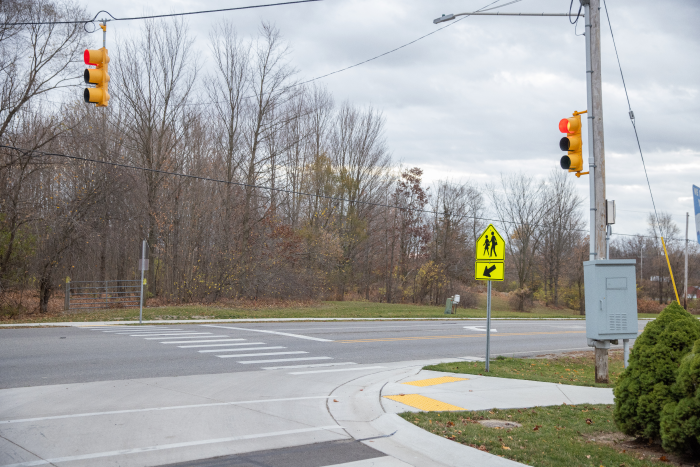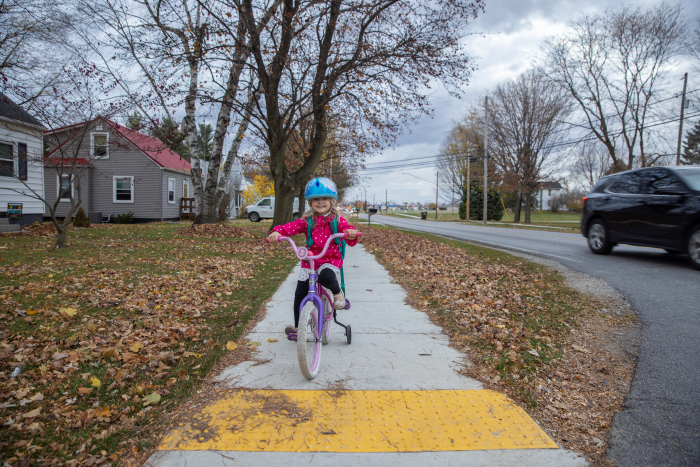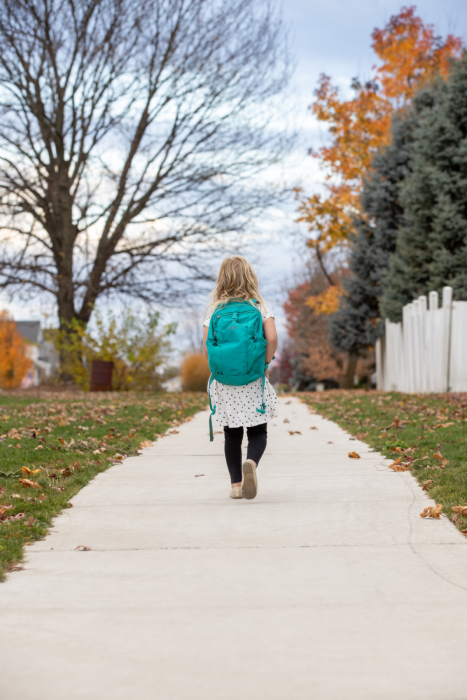Building consensus among stakeholders is an important part of any Safe Routes to School (SRTS) project. At Madison School District, former superintendent and community champion, Ryan Rowe played a key role to gain support for their SRTS project with stakeholders that could amplify the project.

Rowe understood that planning, application, and construction processes can take a long time. To keep the momentum of their SRTS project going, he simultaneously worked on project engagement and funding needs that the grant would not cover. Rowe also focused on facilitating conversations with different groups to “better understand what other people thought was needed, to communicate why a SRTS project was related to those community needs, and to break down how a SRTS project could come to be a realistic and achievable community goal through collective support”.
Serving the community for over 75 years, the Kiwanis Club of Adrian was an important local partner for the SRTS project. Part of the mission of the Kiwanis Club is to bring assets and programs to the community that make it a great place to live, work, worship, and play. Because the club is involved in a variety of projects that involve fundraising, community service, and assisting children, coupled with the success of past collaborations with the Madison School District- supporting the SRTS project was a good fit. Additionally, the collaboration between the Madison School District and the Kiwanis Club added trust and credibility when the SRTS team sought additional support in the community during later steps of the planning process.
Building consensus among stakeholders is an important part of any Safe Routes to School (SRTS) project. At Madison School District, former superintendent and community champion, Ryan Rowe played a key role to gain support for their SRTS project with stakeholders that could amplify the project.
Rowe understood that planning, application, and construction processes can take a long time. To keep the momentum of their SRTS project going, he simultaneously worked on project engagement and funding needs that the grant would not cover. Rowe also focused on facilitating conversations with different groups to “better understand what other people thought was needed, to communicate why a SRTS project was related to those community needs, and to break down how a SRTS project could come to be a realistic and achievable community goal through collective support”.

Serving the community for over 75 years, the Kiwanis Club of Adrian was an important local partner for the SRTS project. Part of the mission of the Kiwanis Club is to bring assets and programs to the community that make it a great place to live, work, worship, and play. Because the club is involved in a variety of projects that involve fundraising, community service, and assisting children, coupled with the success of past collaborations with the Madison School District- supporting the SRTS project was a good fit. Additionally, the collaboration between the Madison School District and the Kiwanis Club added trust and credibility when the SRTS team sought additional support in the community during later steps of the planning process.
Madison School District, Madison Charter Township and the Kiwanis Club contributed funds to cover preliminary engineering for the project. With nearly 50 percent of students being school of choice, providing a safe option for them to participate in SRTS program while reducing congestion around the school was a key focus of the design’s development. The end design created a remote drop off at Bethany Assembly Church by connecting it to the school campus with a sidewalk and crossing improvements running along Treat Highway. The creation and improvement of sidewalks that directly connect to residential areas on both the North and South sides of the campus accommodated safe spaces for walking and biking.

In addition to the infrastructure improvements, the district put together a holistic non-infrastructure plan with educational resources, promotion of the remote drop commuter site, and incentives to encourage student participation. Their Riding to Read and Walking to Write initiatives incorporated active transportation activities to connect students to educational activities both during the school year and throughout the summer.
Today, the sidewalks are being used. Joe Williams, Kiwanis Club member says “you always see families out walking on the sidewalks to the school to access programs and resources year-round. The sidewalk benefits the current community and attracts future families to the community because it improves quality of life in the area.”
Project Impact:
This SRTS project created connectivity between two schools, nearby neighborhoods, and a remote drop site. The project included the installation of sidewalk along school property and the creation and expansion of walkways connecting two neighborhoods to the school property with key improvements like crosswalk striping and ADA facilities.
- MDOT Project Impact Infrastructure Investment $413,750
- Non-Infrastructure Investment: $13,750
The SRTS project was made possible through the continuing collaborative efforts of the Madison School District, Madison Charter Township, Kiwanis Club of Adrian, Lenawee County Road Commission, Michigan Fitness Foundation, Michigan Department of Transportation, and Federal Highway Administration.
